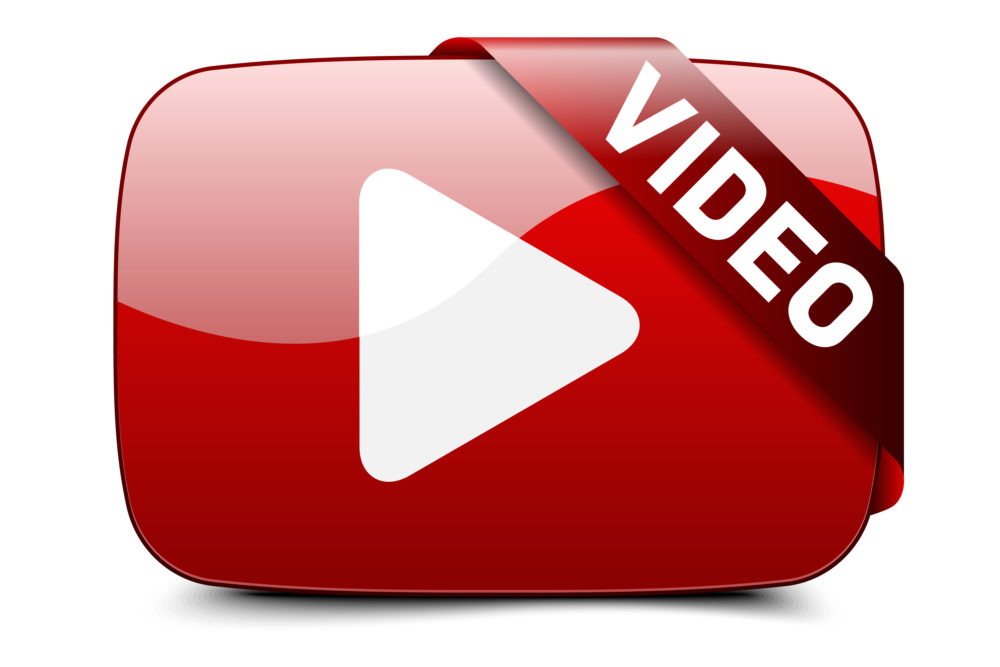As small businesses and their customers become more tech-savvy, marketing is increasingly being undertaken through online channels; video being an especially important one. Market your business on YouTube correctly and you could reap the benefits.
In 2020, 88 per cent of marketing specialists claimed to use YouTube as a part of their digital strategy, according to Oberlo.
Some 1.3 billion people use YouTube globally, and as such promoting your company through the platform represents a substantial opportunity in today’s entrepreneurial landscape.
For businesses, it is getting easier to produce simple films and upload them to YouTube for the consumption of viewers – in fact, 300 hours of video are uploaded every minute to the platform, with 5 billion videos watched every day.
Broadcasting your company’s messages through YouTube serves the purpose of establishing yourself in an industry, building trust with a customer base and providing a platform with which audiences can engage.
A YouTube presence means a more immersive experience. Through a video demonstration of your product or service, for example, customers can get to the heart of what you do and the value you can provide, in a way that is often more effective than text on a website alone. Read this guide to discover how you can maximise your market presence on the internet and effectively market your business on YouTube.
>See also: How to create a YouTube channel for your small business
Tips on how to market your business on YouTube
1. What’s the best style for my video?
You can choose from a variety of styles when shooting your video to go on YouTube. Here are three ideas for types of content:
A piece to camera or Vlog: This is often useful if you want to establish yourself as the face of the brand. It can be helpful for your userbase to get regular updates on what’s happening in the company, whether that’s new products, improvements to the existing service, or even how you as a business owner maintain a healthy work-life balance. Think of it as conversations to engage your audience rather than a sales pitch about your product or service.
It can also help for your users to feel that they can engage directly with the person driving the company. Even if you’re not always personally available to answer all queries, the feeling that customer feedback can be heard by the person at the top, rather than ending up with a disinterested intern, is reassuring for your community.
Interview: If you can identify a thought leader in your industry, it may be worth approaching them for an interview. Being aligned with influential sector authorities can bring substantial rewards, particularly if, following the video shoot, you can promote the video through social, newsletters, and backlinking. This way you can potentially broaden your marketing reach and attract the userbase of your interviewee.
How-to: If you can show your users how your product or service works in a video rather than just tell them through text, it will be so much easier for people to understand what you do. This is particularly useful if your product is somewhat complicated. It may be worth outsourcing work to a specialist video production company if you require advanced graphics. This investment could mean the difference between your users quickly grasping what you offer, and confusing them, leading to a hasty exit from your site.
Challenge: Try using your product or service to do challenges that promote what you’re trying to sell while engaging your audience. For example, if you sell a jam or spread, try three different recipes from three different viewer suggestions to show how versatile it is.
User-based videos: Invite customers to record themselves using your product or service and weave the clips together into a narrative which not only shows what your business does, but what customers like about it.
Collaborations: Pool your audiences and collaborate with another business or YouTuber. Keep it relevant to your audience but it can be beneficial to team up with somebody who offers similar content or can complement yours in some way. For example, if you’re a counsellor, collaborate with somebody who’s talked about their struggles with anxiety on their channel and do a mock first counselling session on camera.
>See also: How to film a YouTube video
2. How do I maximise engagement in my video?
Make sure you include:
- A ‘call to action’ to get people to subscribe to your channel, engage with your brand and ultimately become your customer
- A link to your website, blog, or landing page
- A way to capture their contact information, like a web address.
- An invitation for users to rate your video, subscribe to your YouTube channel, and to follow you on Facebook, Twitter, and other social media.
- Encouragement for people to post your video on their social media or blog.
- Replies to comments. This lets your audience know that you’re interacting with them and care about their feedback. If you have more comments than you have time to answer, you can ‘heart’ comments instead to show that you like them. This goes beyond YouTube – if you see that someone has shared a video, thank them. It may encourage others to check out your channel.
- Consistent posting. It gives your viewers an idea as to what your publishing schedule is and when they should look out for your next video.
- A custom thumbnail. A whopping 90 per cent of YouTube’s best performers have custom thumbnails. Including text on your thumbnail can provide extra information and drive your key message. There are loads of platforms which you can use to create a custom thumbnail, such as Canva.
- Length of video. Research has shown support for both longer and shorter videos, so this really depends on the type of content you want to create. Figures reveal that 60 per cent of viewers drop off after two minutes. If most of your viewers are using smartphones, keep them short and more shareable across social media. Can be trailers or a clip from the video. If you’re thinking something along the lines of a tutorial, then you’d be better extending to over three minutes. Longer videos also mean more dwell time, which means more advertising revenue if you eventually become a YouTube Partner.
- Use annotations and cards (the tab that appears in the top right corner) in the video to direct viewers to other relevant videos of yours.
- End screen. Your end screen is primed to encourage viewers to watch more of your videos. It can display a subscribe button, playlists, related videos or a combination of the three.
- Watermark. Place a watermark (a picture representing your channel) at the bottom right-hand corner of the video which viewers can click on. It’ll give an instant option to subscribe.
- Analytics. YouTube’s analytics are all internal so it can directly read what’s going on within your channels. Find out which videos people are clicking on, how long they watch them and where the click to your video came from along with viewer demographics. This can shape future content.
- Subtitles. People might watch the first little bit of a video on the YouTube homepage and decide they want to click. Of course, it also opens your videos to viewers who are hard of hearing.
- Create a series. Series, especially if they’re posted at same time every day, week or month, can create a loyal audience eager to tune into the next instalment.
- Do a live stream. Subscribers will be notified when you go live and they can watch the stream after it’s been recorded. Casual viewers can find your live stream through the Explore tab. According to livestream.com, people spend eight times longer watching live streams than on-demand videos.
- Make playlists. As they play one video after another, playlists can drive views on related videos and improve your overall YouTube ranking.
- Engage with relevant trends. The caveat here is that they should be related to what your business does. For example, there’s no point creating a morning routine or night routine video if you don’t sell a product or service that could comfortably fit within it.
Find out more in Justin Brown’s video below:
3. What equipment should I use?
In the absence of expensive technology, you can use a smartphone to film your video – the quality will often be as good as specialist equipment.
Lighting and sound are key, so make sure your room is well lit and consider buying a lapel microphone; these are cheap and effective. A tripod will help you keep a steady shot and you can buy tripods that cater for mobile phones.
Basic video editing software can be used to add titles and edit out the mistakes. iMovie, for example, is a free tool on most iPhones.
If you’re planning to do a lot of action-based filming, it may be worth getting an extra camera like a GoPro that you can attach to a cycle helmet, for example.
Remember that if your budget is tight you can pick up decent equipment second-hand.
>See also: How I grew my YouTube channel to over 68,000 subscribers
4. How can I promote the video effectively?
Get the right search engine optimisation (SEO) in place: Make sure you use the right keywords that are related to the theme of your video. It’s simple: if you’re selling home furnishings online, use the keyword ‘home furnishings’. You put the keywords in your video title, the description, and tags. Be careful not to overdo it and ‘tag-stuff’ though, lest you be penalised by YouTube.
If in doubt, use Google Ads Keyword Planner to help you find the right keywords for your company. Test it out by typing your proposed keyword into Google and seeing what comes up in the results. Notice what words are used in the video snippets on the results page to gauge what performs well. Include these keywords as near to the beginning of the video’s title as you can and make the title 60 characters maximum.
Engage with the feedback: When someone comments on one your videos, send a message back to thank them or answer their query. It also helps to comment on other people’s videos, which may get those people onto your channel.
Spread the word: Whether it’s through posting on your blog/website, through social, solus emails, make sure you tell your customers, suppliers and partners about your video and get more shares!
Do a giveaway: You don’t have to give much away – perhaps team up with another local business to give away a spa treatment. In any case, you could advertise the giveaway on the YouTube Community tab as well as your other social media channels. Invite viewers to tune into a live stream to find out who the winner is – which also gives you practice using this feature.
Here, we talk to three business owners who maximised their marketing through an effective YouTube presence.
Rupert Rixon, founder and managing director, Perspective Pictures

I first decided I wanted a YouTube presence to promote the Nerf gun business my mum and I launched. The idea was to advertise the fact that kids could rent them for parties, so to spread the word about what we were doing I built a website and would make videos of them in action.
This developed over time and I began to shoot short movies pretending the Nerf guns were real and this really took off. After putting the videos on YouTube they went viral, with some getting millions of views. It was this that made me realise my passion for making films, so I focussed my attention on that side of things.
Setting the page up was super easy; it’s as simple as signing up for a Facebook account or something similar. You design the page to best represent you and the content you’ll be posting, then carefully plan what sort of videos you’ll start to upload.
“I loved making films, uploading them, receiving feedback and improving with the next one”
I was really lucky at the time as I’d stumbled across the ‘rule’ that to have success on YouTube you really need to focus in on a niche – mine initially being Nerf gun films – and create content around that. This helped me build a loyal audience as a foundation point which would evolve with me and grow as I began to widen the content I was producing.
When I started on YouTube it was definitely a lot easier. I was getting traction very quickly as I was one of the early creators developing videos in my particular niche.
This meant I was beginning to build some ad revenue; making tens of thousands of pounds in a short space of time when I first kicked things off. For me though, it was more about learning about the process and building my production skills. I’d post content regularly and I really benefited from that. I loved making films, uploading them, receiving feedback and improving with the next one.
Building business opportunities
The second thing that arose from it was business opportunities. Companies would often approach YouTube when they were looking for video makers to create content for the platform, and because I’d built a strong following on there – of more than 22,000 subscriptions at the time – they’d often recommend me. My relationship with YouTube grew to the point where I’d get invited to conferences and workshops the company was hosting, could rent equipment from them and was invited to use their space to film too.
Everything I’d made was on this channel, with a visibly strong community around it of people ‘liking’, commenting and interacting with my content, so it was also a great promotional tool for my work. If you don’t have the right tools to build a really beautiful website for your portfolio, YouTube does wonders to let people see your stuff in context.
Our presence on YouTube attracted a lot of eyes over the years that have evolved into clients. Two years after launching Perspective Pictures, we now work with some of the coolest, most well-known household names in the world, including Rolls-Royce, Google, Sony, UFC, Island Records, Red Bull, HSBC, Brewdog and the RAF to name a few.
Pick a niche and build a presence across the spectrum of social media; don’t just rely on YouTube. These platforms are a great promotional tool to drive viewers to your video content.
Also create content that’s easy for you to produce at scale. YouTube’s a long game, so implement a strategy that you can regularly execute. Your audience base becomes used to the patterns in which you upload a video and they expect the same quality of production each time, so make sure you don’t do yourself a disservice by starting out with crazy videos filled with special effects that you can’t follow up with.
Michaela Efford, founder, Michaela Efford Photography

I run a photography business, mainly shooting fashion bloggers and luxury brand campaigns that involve fashion bloggers. I started last year and found that photography does not just have to be a hobby, it can be a profession.
I started on YouTube three months ago, so I’m still very new on the platform. Like all social platforms you need to learn what works; what content people enjoy, posting times and the relevant tags to include in your videos.
“People love watching behind the scenes of my shoots”
Due to YouTube I now have clients wanting me to film them, so it’s another business I can start developing. I’m still very new to the platform though, so this aspect is growing. Getting to the first 100 subscribers on YouTube was hard, as no one wants to subscribe to a channel that barely has any videos or subscribers.
In terms of marketing, I use [influencer marketing platform] Whalar and promote my channel through Instagram, as I’m over 10,000 I have the swipe up feature on my Insta stories which means people can easily watch my videos without having to leave the app.
People love watching behind the scenes of my shoots, it makes people want to book me and encourages smaller photographers to watch my channel too.
In terms of advice for small businesses, I would say produce 3-6 videos before you launch your YouTube channel, that way you can post videos consistently and it takes the stress away when you don’t have time to film a video.
Jake Cassels, managing director, The Connected Set

The Connected Set is a production company that specialises in content for young audiences. When we launched, pre-Netflix, Amazon and other SVOD services, we were particularly interested in the convergence of TV and online and had identified a number of unmet opportunities to produce content and interactive experiences delivered online and on mobile.
We first launched our YouTube channel, Mashed, in late 2013. Mashed is a comedy animation channel about video games. At the outset, the practical process of setting up the channel couldn’t have been easier. It was little more than filling out an online form. However, the tough work is deciding what makes your offering distinct in a hugely crowded market place and how to create a brand for your channel. Then comes maintaining, growing and keeping the channel fresh.
Initially it was a slow burn to grow the channel. We were incredibly excited to see reaction to the content and often obsessively watched views tick over. It was equally frustrating and exhilarating. Although our first few videos didn’t smash our views targets, we persevered and made sure we kept publishing on a consistent and regular basis. We monitored analytics closely to help us test content types, durations, themes, subject matter; we tweaked meta data, played with thumbnails and established partnerships and collaborations with other creatives and channels.
“YouTube is crucial for showcasing our expertise”
By persevering we achieved a number of mini wins. The days we smashed 50,000, then 100,000 then 1,000,000 views are still vivid memories in my mind and we still get just as excited and hopeful with every video we upload. Even though there were plenty of channels with many more views than we’d achieved on Mashed, the commercial interest we garnered was largely based on the content niche we’d carved, the audience we were reaching and, most importantly, the quality of the content we were producing. This combination proved attractive to gaming brands who benefited from what was perceived as ‘fan created’ content about their games. Gaming brands operate very differently to other consumer brands and we were able to openly satirise and parody their games to help them build exposure.
For a production company specialising in content for young audiences Mashed on YouTube is crucial to showcase our expertise and capacity for producing a high volume of funny content that resonates well with young men. It’s a great calling card to prospective clients around the world. We can prove that we understand the platform, we understand how to reach and engage young audiences and we can successfully innovate and test new content types. Mashed has created a number of very interesting opportunities for The Connected Set to pursue.
Who are you making videos for?
Before you start to make videos to upload to your channel, try and define who you are making videos for; build a very clear picture of your target audience; create a persona that represents this and ask yourself how you think that person would react to any planned content.
Is YouTube the right place to reach this audience? Where else do you need to be posting videos? What’s the optimum duration for your target audience? What time should you publish videos? How frequently should you publish? Could you make live content?
Don’t be afraid to experiment but when you do don’t worry about the number of views you get. Celebrate your successes and learn from and be curious about times when things don’t go so well. Try and be collaborative with other creators. Ask them questions about their experiences and try and find ways to work together for mutual benefit. Don’t give up and don’t take comments to heart. Good luck!
What are the next steps for my YouTube channel?
Take care of the above first before you read through this section. In short, create great content consistently. Once you’re more established, it might be time to have a think about rapid growth and monetisation.
Join YouTube’s partner programme – your channel must have a minimum of 1,000 subscribers and minimum of 4,000 valid watching hours in the past 12 months. You must have a linked Google AdSense account and no active community guideline strikes against you.
You’ll get:
- More money
- More capabilities like including chapters in your videos
- The ability to upload YouTube video outside the platform
- Copyright and distribution rights that non-partners don’t get
- Additional exposure because your videos will be prioritised higher up the YouTube homepage
- Customisable business branding
Get the verification tick when you’re eligible. It’s like the tick you see next to usernames on Twitter, but it’s grey rather than blue.

You can make a request for a verification tick once you have 100,000 subscribers. Verified channels don’t get extra features on YouTube but they create trust within your viewership. Note that if you change your channel name, you’ll lose your verification and have to start your application again.





